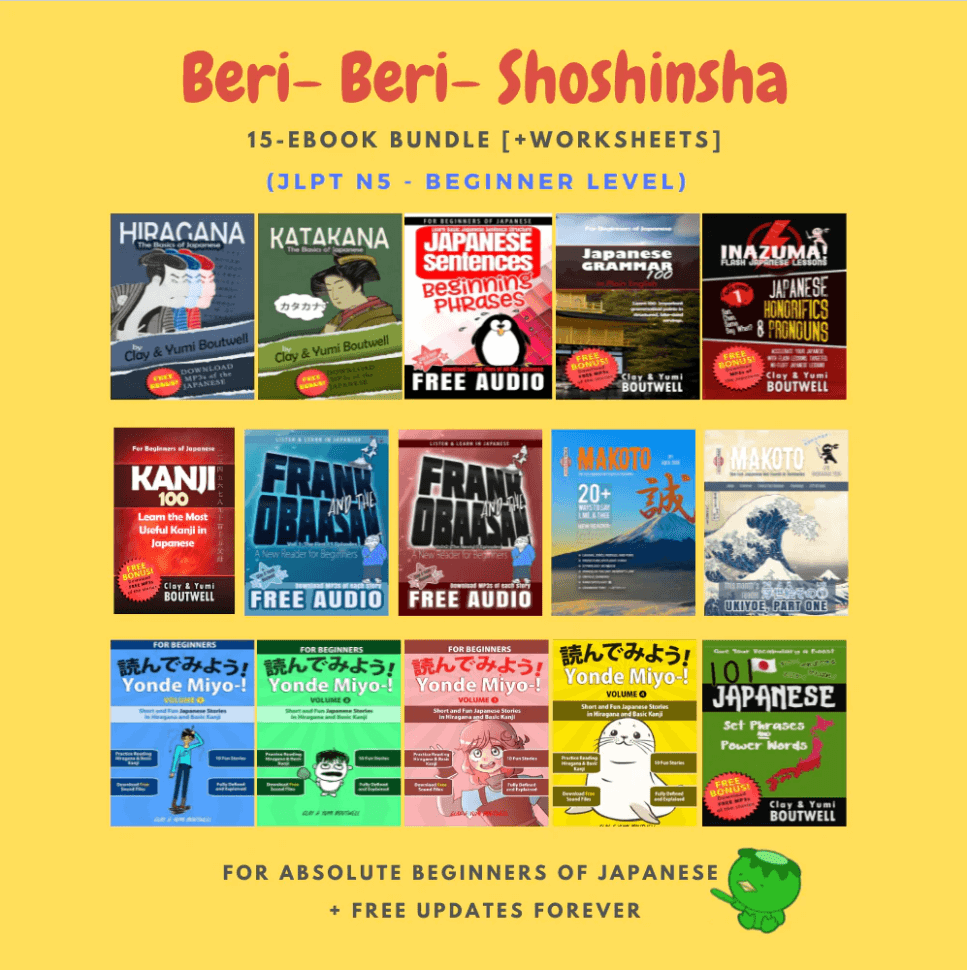
All About い i Adjectives
Adjectives are split into 2 groups.
- -i adjectives
- -na adjectives (for -na adjectives click here)
Today, we'll look at -i adjectives, but
Before the lesson, you need to know...
- Adjectives in Japanese are different from English adjectives in that they conjugate like verbs. That is, they have a different form for the past and negative tenses. In this lesson, you will learn the basic forms.
- These are called -i adjectives because they end with an -i sound. However, a few -na adjectives also end in -i like きれい kirei (pretty). You'll just have to learn these exceptions.
はじめましょう! Let’s begin…
-i ADJECTIVES
Examples of -i adjectives are さむい samui (cold) and あつい atsui (hot) [notice they both end with an -i; see here for a much longer list]
The past tense of -i adjectives is formed by dropping the -i and adding "katta" ![]() samu katta (was cold) and atsu katta (was hot).
samu katta (was cold) and atsu katta (was hot).
The negative (non past) is formed by dropping the -i and adding "kunai" ![]() samu kunai (not cold) and atsu kunai (not hot)
samu kunai (not cold) and atsu kunai (not hot)
LET’S TAKE A CLOSER LOOK AT THIS…
SENTENCE #1: non-past lone adjective
北海道は さむい です。
hokkaidou wa samui desu.
Hokkaido is cold.
Here the adjective さむい (cold) is used by itself (not modifying a noun or anything) so it doesn’t change at all!
SENTENCE #2: non-past modifying adjective
北海道は さむい ところ です。
hokkaidou wa samui tokoro desu.
Hokkaido is a cold place.
This sentence is just like above but now the adjective さむい (cold) is modifying a noun ところ (place), BUT it doesn’t change forms either (just like the English)!
For -i adjectives there is no change of the adjective behind a noun or when it's on its own.
Easy, right?
Well, don't get too happy. Let’s go negative…
SENTENCE #3: non-past negative
フロリダは さむくない です。
furorida wa samukunai desu.
Florida is NOT cold.
Now we have the first change. Unlike English, adjectives change when the sentence is negative. It may seem strange at first, but you will get used to it. Simply drop the -i and add the -kunai. Before a noun it would be the same: samukunai tokoro (not a cold place)
SENTENCE #4: past
この 冬は さむかった です。
kono fuyu wa samu katta desu.
This winter was cold.
For the past tense, drop the -i and add –katta.
Note: very often the desu at the end is dropped
The above examples represent the most common usage of -i adjectives. But there is also…
SENTENCE #5: past negative
きのう の 夜は さむくなかった です。
kinou no yoru wa samu ku na katta desu.
All of this can be confusing for the beginner. I suggest memorizing a few good ONE-WORD examples. For example, if you spend a few minutes memorizing the following words, you should be able to figure out how to say other adjectives' forms. |
い | おもしろい。 | おいしい |
|---|---|---|
-kunai | おもしろくない | おいしくない |
-katta | おもしろかった | おいしかった |
-kunakatta | おもしろくなかった | おいしくなかった |
Listen to all four conjugations: |
|
|
As I mentioned at the top, the endings for -i adjectives are the same as verb endings.
Click here to view a list of i-adjectives with sound.
Or, if you are ready to move to -na adjectives, click here.





